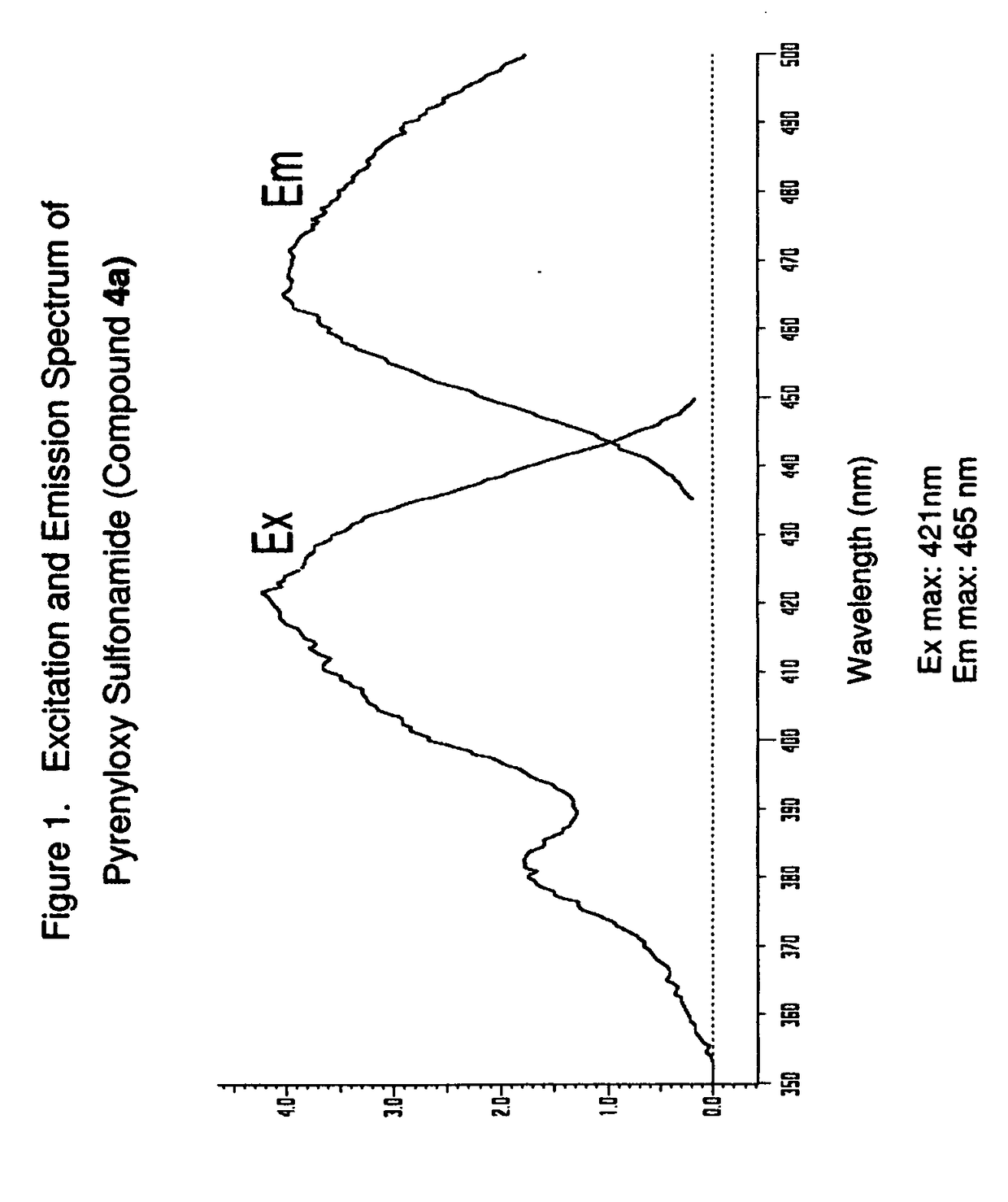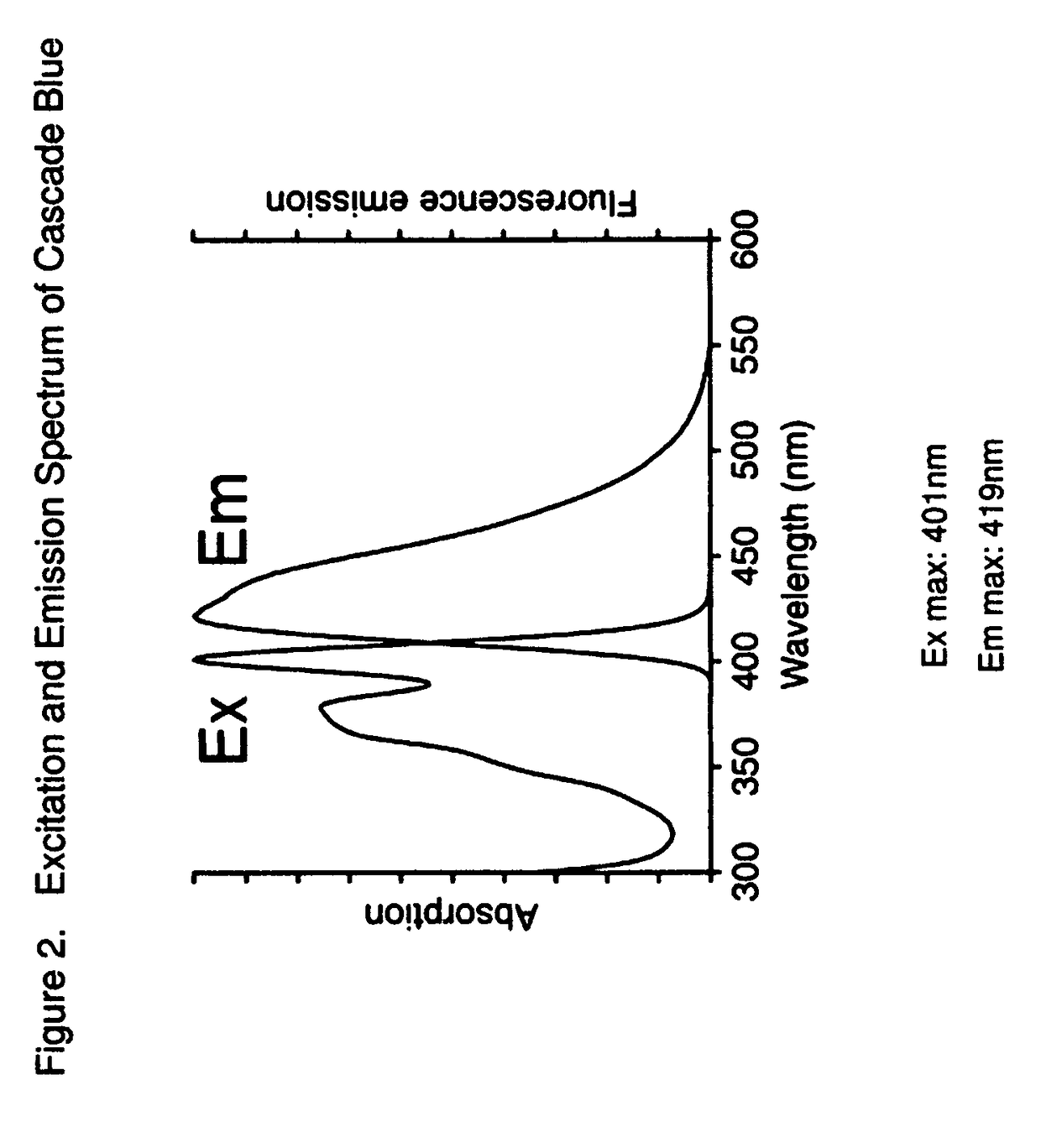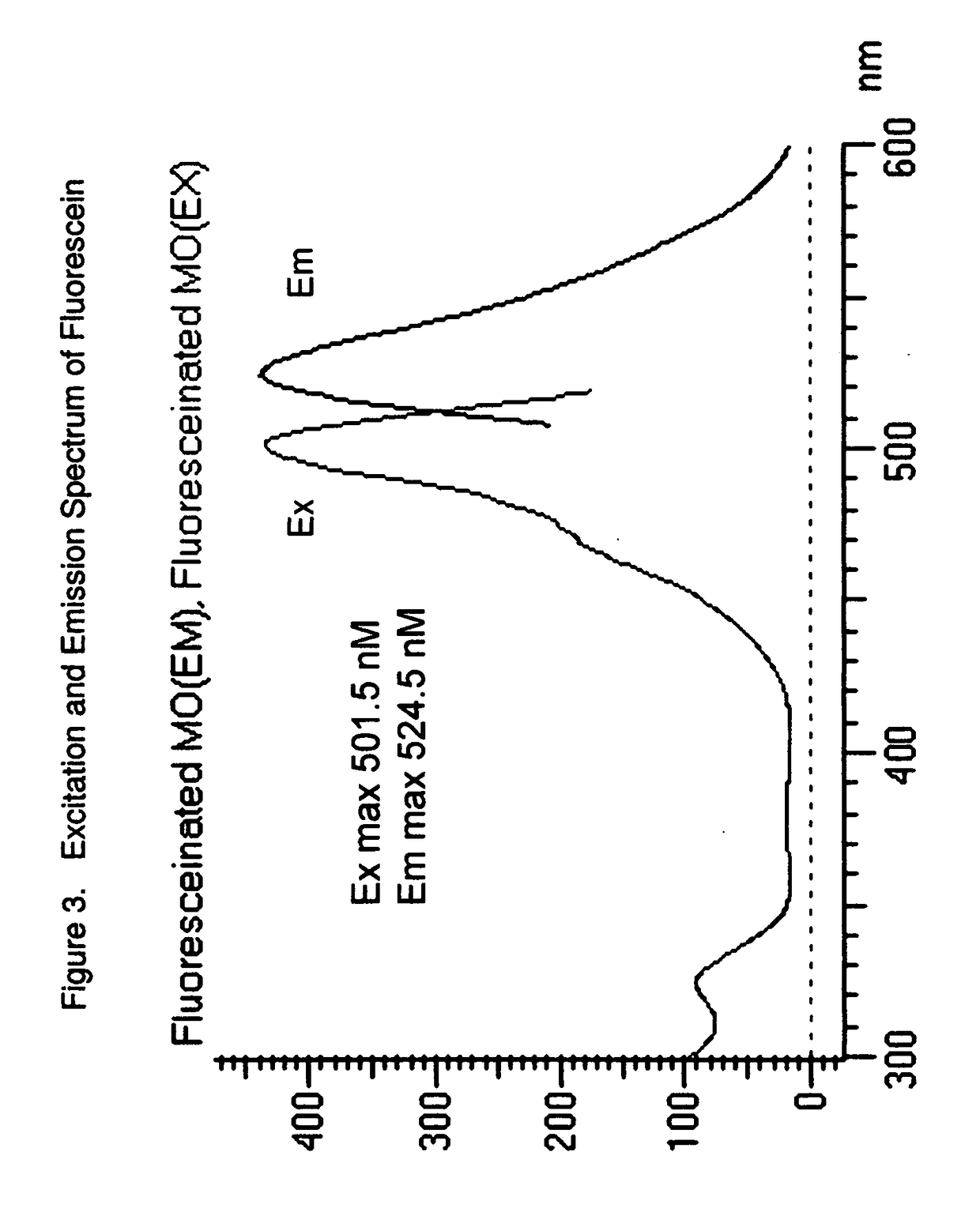Uncharged pyrenyloxy sulfonamide dyes for conjugation with biomolecules
- Summary
- Abstract
- Description
- Claims
- Application Information
AI Technical Summary
Benefits of technology
Problems solved by technology
Method used
Image
Examples
example 1
Trisodium 8-acetoxypyrene-1,3,6-trisulfonic acid (1)
[0046]Trisodium 8-hydroxypyrene-1,3,6-trisulfonic acid (4.56 g, 8.70 mmol) and sodium acetate (71.4 mg, 0.88 mmol) were suspended in acetic anhydride (50 ml) and refluxed for 35 hours (Finider, B. et al. Photochemical &Photobiological Sciences 13, 548-562 (2014)). After the suspension was cooled down to room temperature, it was diluted with THF and filtered off. The residue was washed with acetone and dried under vacuum yielding a grey powder (5.52 g, 8.0 mmol, 92%).
example 2
8-Acetoxypyrene-1,3,6-trisulfonyl chloride (2)
[0047]The above trisulfonic acid 1 (1.09 g, 1.93 mmol) was suspended in thionyl chloride (5 ml). After addition of dimethylformamide (30 μl), the mixture was heated to reflux for 5 hours. The solution was cooled down to room temperature and poured on ice. After precipitation, the sulfonyl chloride was filtered off and was obtained as an orange powder after drying in vacuo (1.04 g, 1.88 mmol, 97%).
example 3
8-Hydroxypyren-tris(morpholino)-1,3,6-trisulfonamide (3a)
[0048]The above trisulfonyl chloride 2 (1.04 g, 1.88 mmol) was added to morpholine (10 ml) cooled in an ice bath. The mixture was kept at room temperature for 16 hours. Most reagents were removed by evaporation. The residue was dissolved in dichloromethane and washed with aqueous hydrochloric acid (1N). The organic layer was separated and dried over sodium sulfate. After removal of the solvent, the residue was obtained as orange powder (1.20 g, 1.80 mmol, 95%). Rf=0.11 (ethyl acetate / hexanes: 1 / 1).
8-Hydroxypyren-tris(pyrrolidino)-1,3,6-trisulfonamide (3b)
[0049]Compound 3b was prepared following the general procedure as for 3a. The product was obtained as orange powder (98%). Rf=0.26 (ethyl acetate / hexanes: 1 / 1).
8-Hydroxypyren-tris(piperidino)-1,3,6-trisulfonamide (3c)
[0050]Compound 3c was prepared following the general procedure as for 3a. The product was obtained as orange powder (97%). Rf=0.45 (ethyl acetate / hexanes: 1 / 1).
8-...
PUM
 Login to View More
Login to View More Abstract
Description
Claims
Application Information
 Login to View More
Login to View More - R&D
- Intellectual Property
- Life Sciences
- Materials
- Tech Scout
- Unparalleled Data Quality
- Higher Quality Content
- 60% Fewer Hallucinations
Browse by: Latest US Patents, China's latest patents, Technical Efficacy Thesaurus, Application Domain, Technology Topic, Popular Technical Reports.
© 2025 PatSnap. All rights reserved.Legal|Privacy policy|Modern Slavery Act Transparency Statement|Sitemap|About US| Contact US: help@patsnap.com



